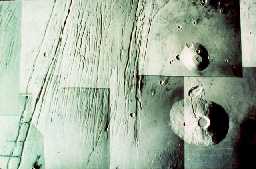This is a drawing of the Earth's lithosphere.
Click on image for full size
Clues to Plate Movements
Many kinds of surface features are clues to a sliding
lithosphere.
Two types of features can form when plates move apart. At ocean ridges, the crust splits apart to make room for molten mantle rock. Continental rifts form when a continent begins to split apart.
When two plates move towards each other, sometimes one of the plates is forced to go down into Earth’s hot interior at a subduction zone and volcanoes form nearby. Or, if neither plate is subducted, the two will crash into each other forming huge mountains.
These features are special clues that prove our planet's surface is in motion. There are only a few other planets that have clues like these.
You might also be interested in:
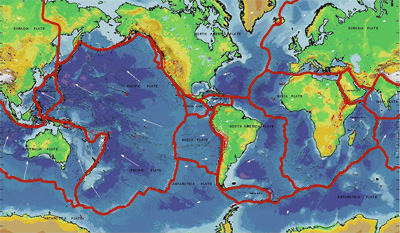
Many forces change the surface of the Earth over time. The largest force that changes our planet's surface is movement of Earth's outer layer in a process called plate tectonics. As shown in this picture,
...more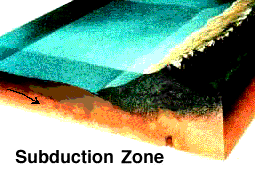
When two sections of the Earth's crust collide, one slab of lithosphere can be forced back down into the deeper regions of the Earth, as shown in this picture. The slab that is forced back into the Earth
...more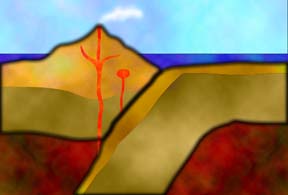
Mountains are built through a general process called "deformation" of the crust of the Earth. Deformation is a fancy word which could also mean "folding". An example of this kind of folding comes from
...more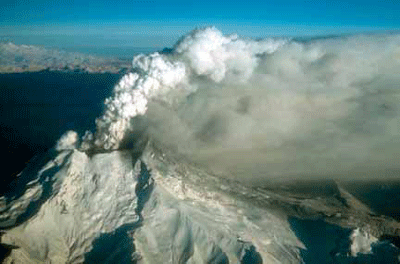
Ash is formed as a volcano erupts when rocks made by the volcano blow apart into millions of tiny pieces. The rocks are still very hot, because they just formed from lava. If the hot rocks come into contact
...more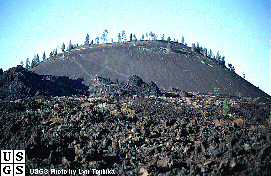
Cinder cones are simple volcanoes which have a cone shape and are not very big. Compare the size of this volcano to the strato-volcano in this image. They are usually made of piles of lava, not ash. During
...more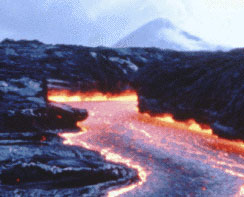
Lava can move in two ways, wide flat lava flows, or through channels which squeeze the lava into a small area. The fastest lava flows move at about 6 mi/hr, an easy jog, but they average between 2/3 and
...more









